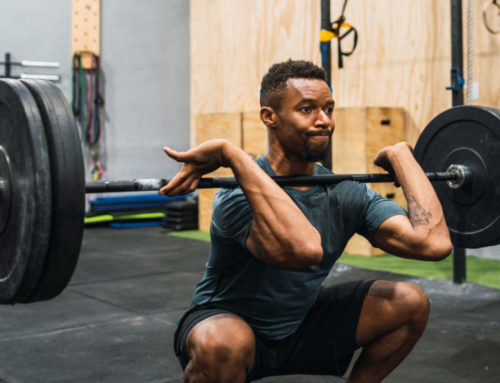It can take years to construct a building but seconds to destroy it. The same holds true for the body. It is easier to lose fat than it is to build muscle. As an example, the rate of fat loss can be as high as 3–alb per week depending on initial levels.
The most amount of muscle a natural athlete can gain is 2lb per month. And that’s just in their first year because the rate decreases as time goes on.
Unfortunately most people do not maximize the process of hypertrophy (muscle building). They’ll typically commit several mistakes along the way, and those can cut gains by as much as 50%. The errors can be as simple as not consuming enough calories, or performing too much high- intensity work. Or they can be something as complex as meal timing.
1. Killer cardio
The current craze nowadays is HIIT-style cardio (high-intensity interval training), which involves 100% effort followed by a short rest. HIIT has earned the reputation of being the best cardio workout to preserve muscle. But that’s not entirely deserved.
In the same way that doing too much low-intensity steady-state cardio can slow down muscle gain or even eat away at your hard earned muscle, HIIT cardio can impede muscle gain. Without boring you with unnecessary detail, doing too much HIIT has the tendency to activate the molecule AMPK. If that happens too often muscle growth will be inhibited.
2. Over eating
Eating every two hours causes muscle cells not to respond to stimulation (and so grow) from amino acids. For those of us wanting to build muscle, unless you are retired swimmer Michael Phelps, the most successful Olympian ever who required 12,000 calories daily, there is no need to eat every two hours as it decreases muscle growth.
3. Adding to the bar
There is no way around it: in order to grow, your muscles must be placed under enough physical duress to require them to adapt in anticipation of the next training session.
That means the building of new contractile muscle fibers, a process otherwise known as myofibrillar hypertrophy, can only be accomplished by adding weight to the bar over time. In other words, increasing the amount of weight used to train in a given rep range over time is the best way to grow.
4. Weight issues
‘Go heavy or go home,’ is the mantra heard across gyms worldwide. The two avenues of muscle growth are myofibrillar and sarcoplasmic hypertrophy. Myofibrillar hypertrophy is the growth of actual muscle fibers, which is mainly induced by lifting heavy (generally 70–85% of your one-rep max). Sarcoplasmic hypertrophy, which occurs with high reps, is the increase of the content of muscle cells responsible for converting glycogen to ATP.
ATP is something you want whatever your goal. It’s the body’s ‘energy currency’ or muscle contraction, protein synthesis (construction of muscle fibers) and a host of numerous metabolic processes. Thus, with a lack of the ATP build-up – which comes with sarcoplasmic hypertrophy – that’s required to support protein synthesis, the trainee hits a plateau because their muscles aren’t getting enough of what they need to develop.
It is worth noting that although the phases of hypertrophy are separated for general instructional purposes, there is an overlap between both. In other words, even during the high-repetition phase that’s a cornerstone of sarcoplasmic hypertrophy, the trainee will still experience some myofibrillar hypertrophy. So going heavy shouldn’t always be your go-to move.
5. Carbophobia
Often people will try to lose fat while gaining muscle, so they cut consumption of carbohydrates severely, but that’s problematic because without carbs, high-intensity activities cannot be properly sustained. That means you can’t add weight to the bar and so you might struggle to grow.
For detailed workout guides on building muscle, check out TRAIN magazine – on sale now!







